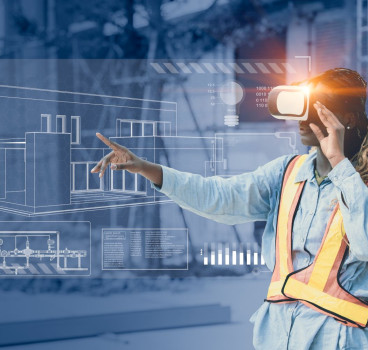Why you need an old-fashioned surveyor to question digital accuracy
The contemporary construction and engineering landscape is increasingly defined by technology. Drones map vast terrains in minutes - LiDAR scanners capture intricate geometries with unprecedented accuracy and Building Information Modelling (BIM) platforms integrate data from diverse sources into comprehensive digital twins. In this highly automated environment, it is tempting to view the methodologies of the past as obsolete, charming relics of a less efficient era. Yet, before digital tools were invented, the foundational work of site surveying was performed with precision by professionals armed with instruments that now seem almost quaint, writes John Ridgeway.
Pre-digital site surveyors operated within a world constrained by manual calculation and direct physical engagement with the landscape. Their toolkits comprised optical instruments such as the theodolite, the dumpy level and later, the total station, alongside steel tapes, ranging poles and intricate logarithmic tables. Each measurement was a deliberate act, often requiring multiple repetitions and meticulous record-keeping in field books.
This process instilled a profound respect for accuracy, as errors could not be easily corrected by a software algorithm. Every angle turned, every distance measured, every elevation recorded was a testament to the surveyor's patience, precision and diligence. The discipline of these techniques, far from being a mere historical footnote, laid the intellectual and methodological groundwork that now underpins all subsequent technological advancements in geospatial data acquisition.
One of the most salient aspects of traditional surveying was its emphasis on direct observation and empirical understanding. Before point clouds and orthophotos, surveyors spent extensive hours on site, physically working the ground, observing its nuances, and developing an intuitive understanding of its geological and topographical characteristics.
They learned to read the land not just as a collection of coordinates, but as a dynamic environment. This direct engagement fostered an appreciation for the context of the survey data - the soil conditions, the presence of water bodies, the natural drainage patterns and the subtle shifts in elevation that might not be immediately apparent from a digital model alone. This contextual awareness remains critical - because while technology provides the 'what' - direct observation often illuminates the 'why' and informs the practical implications of the data.
The pre-digital era
The accuracy required for data capture and error management in the pre-digital era instilled an unparalleled discipline. Every measurement was potentially fallible and the consequences of error were significant. Surveyors developed robust techniques for cross-checking measurements, performing redundant observations and applying rigorous adjustment methodologies to minimise cumulative error. The process of closing traverses and level loops, where the final measurement had to precisely align with the starting point, demanded an inherent understanding of geometric principles and an unwavering commitment to precision.
This iterative process of measurement, validation, and adjustment cultivated a profound respect for the integrity of data. In contrast, while modern digital tools offer speed and apparent infallibility, they can also mask fundamental errors if the user lacks a deep understanding of the underlying principles or the sensitivity to question anomalous results. The 'black box' nature of some automated processes can lead to an uncritical acceptance of data, highlighting the continued need for surveyors who possess the critical thinking skills honed by pre-digital practices.
Furthermore, traditional surveying fostered exceptional problem-solving capabilities and adaptability. Without the luxury of instant digital processing or the ability to remotely capture data, surveyors frequently encountered unforeseen obstacles - dense vegetation, inaccessible terrain, or active construction sites. They had to devise on-the-spot solutions, creatively adapting their techniques and instruments to obtain necessary measurements.
This often involved developing a deep understanding of instrument mechanics, enabling impromptu repairs or ingenious workarounds in the field. This resourcefulness, born out of necessity, cultivated a mindset of practical ingenuity that remains highly valuable in complex project environments today. The ability to troubleshoot, to think spatially and geometrically under pressure and to innovate solutions for unique site conditions is a direct legacy of these demanding methodologies.
The development of strong geometric and mathematical foundations was another inherent benefit of pre-digital surveying. The reliance on trigonometry, coordinate geometry and statistical analysis for calculations and adjustments meant that surveyors possessed a visceral understanding of the spatial relationships they were mapping. They computed coordinates, areas and volumes manually or with early calculators, internalising the mathematical logic behind every point and line.
This deep theoretical grounding enabled them to identify illogical results, conceptualise complex three-dimensional problems and communicate spatial information with clarity and authority. While software now performs these calculations instantaneously, a fundamental grasp of these principles ensures that modern professionals can validate outputs, understand limitations and interpret data with genuine insight, rather than simply operating a machine.
Communicating survey data
The communication of survey data also underwent a transformation. Before the widespread use of CAD software, survey information was meticulously translated from field books into hand-drafted plans. This process demanded exceptional drafting skills and clarity of representation. Every line, every symbol, every annotation was carefully considered to convey spatial information with absolute precision and legibility. This manual rendering process instilled a profound appreciation for graphical communication, ensuring that complex data sets were presented in an unambiguous and informative manner. While digital drafting tools offer speed and flexibility, the core principles of clear, concise and accurate graphical communication, honed by generations of manual draftsmen, remain paramount for effective project delivery.
The wisdom gleaned from these pre-digital practices transcends mere nostalgia - it offers critical lessons for the contemporary geospatial professional. The principle of redundancy in measurement, a cornerstone of traditional surveying, is still vital. Even with advanced scanners, incorporating redundant control points and independent checks enhances data reliability. The importance of ground truth cannot be overstated - while aerial or remote sensing provides broad coverage, direct observation and ground-based validation remain essential for accuracy and context. The critical role of control networks, meticulously established and checked by traditional methods, forms the unseen skeleton upon which all high-accuracy digital mapping relies. Without stable, accurate control points established by rigorous techniques, even the most advanced drone or LiDAR system cannot deliver reliable results.

Furthermore, the fundamental understanding of instrumentation and its limitations cultivated by pre-digital surveyors remains crucial. Knowing how a total station measures angles and distances, or how a level establishes elevation, provides invaluable insight when interpreting data from its automated counterparts. It fosters a healthy scepticism towards 'black box' solutions and encourages a deeper interrogation of data quality and potential sources of error. This intellectual curiosity, a hallmark of traditional practice, ensures that technology serves as an enabler rather than a substitute for informed judgment.
Ultimately, the enduring wisdom of pre-digital site surveying underscores the paramount importance of human judgment and experience in an increasingly automated field. While technology can automate data capture and processing, it cannot replace the surveyor's intuition, their problem-solving acumen, their contextual understanding, or their ethical commitment to accuracy. The ability to interpret anomalous data, to troubleshoot unforeseen site conditions, to understand the implications of geological features on structural stability, or to discern the true nature of an historical boundary requires a depth of knowledge that transcends mere software proficiency. These are the skills forged in the crucible of direct interaction with the land, under varying conditions, using instruments that demanded a profound connection between the operator and the measurement.
Fostering respect for these foundational skills is not about rejecting technological progress, but about building a stronger, more resilient geospatial profession. It involves integrating the rigour and discipline of traditional methodologies into contemporary curricula. It means encouraging hands-on experience, even with 'older' instruments, to develop an intuitive understanding of spatial relationships and measurement principles. It advocates for a professional mindset that values critical thinking, meticulousness and problem-solving ingenuity as much as proficiency with the latest software. By honouring the unsung heroes who meticulously mapped our world 'before the drone,' we equip the next generation of surveyors, engineers and construction professionals with the comprehensive understanding and ethical backbone necessary to navigate the complexities of our built environment, ensuring that technological advancement is always underpinned by foundational excellence.
Additional Blogs

What the UK can learn from global construction tech leaders
The UK construction sector stands at a critical crossroads. Mounting pressures - stagnant productivity, acute labour shortages, tightening safety requirements, ambitious carbon-reduction targets and...
Read moreAre architects losing their influence in the digital era?
For decades, architects have been the central creative force in construction, shaping the buildings we see and the way projects are conceived, communicated and delivered. Their role has been...
Read more

Why the word “Innovation” has lost its meaning in construction
“Innovation” has become one of the most overused terms in construction. It appears in the dozens of press releases we receive each day, conference talks and project reports, often without any real...
Read more